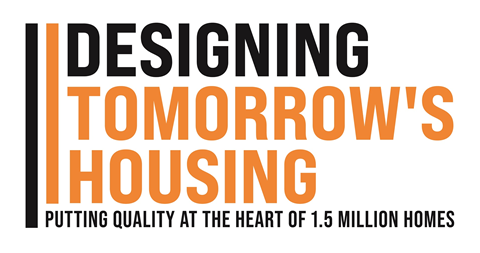By failing to prioritise viability from the outset, housing schemes risk becoming undeliverable, plagued by delays, design loops and consultation fatigue. Alison Coutinho argues that putting viability first can bring greater certainty and help deliver better outcomes for all stakeholders

The traditional approach to large-scale housing delivery needs to change.
In most cases, design teams undertake capacity studies based on physical, legal and planning constraints. These studies are costed and appraised prior to further design development, public consultation, planning consent and then delivery.
When this works well, design iterations are minimal and incorporated quickly before progressing each site to delivery. However, this approach has several flaws.
To begin with, it often fails to consider factors outside of the ‘spatial’. A whole range of competing priorities, ranging from funding to local need, politics, market appetite and economic impact, all of which are embedded in viability, can influence how a housing programme should be delivered. By failing to appreciate these early in the process, sites end up stalled and undeliverable.
In addition, this approach can result in a toxic cyclical design phase, with multiple rounds of changes as stakeholders and the community share their sometimes competing views. Again, without a clear 360° view of the broader factors required to progress towards delivery, developments often result in delays, increased costs, greater uncertainty and dissatisfied residents who are at risk of ‘consultation fatigue’ through repetitive engagement on designs that are undeliverable and therefore at significant risk of change.
These factors put housing delivery programmes in jeopardy and exacerbate the increasingly challenging planning environment. Planning departments across the country are facing substantial resource shortfalls, with government figures for Q1 2025 showing that approved planning decisions have dropped 10% since the previous year.
This also contributes towards delayed starts to construction, pushing back completions and adding significant costs to an already costly and time-intensive process. In addition, it creates a risk of financial penalties under the current government’s proposed planning reforms.
Ultimately, the delays and costs associated with the repeating design cycle hamper the country’s ability to successfully deliver sustainable densification and create a gap in the market for offloading swathes of soulless off-the-shelf units that are detrimental to sustainable placemaking.
We need to improve on this to meet the government’s ambition of delivering 1.5 million homes and launching a new towns programme over the course of this parliament, alongside ensuring that these delivered homes are well designed and support resilient and thriving communities. This means approaching development with a clear focus on viability parameters right from the start and in lockstep with the broader factors.
Viability, right from the start
By putting viability at the forefront, I mean starting with a whole-team focus on what is achievable and how best to create certainty across the lifecycle of the programme.
We know from our experience working with housing developers and local authorities responsible for housing that viability is one of the biggest risks to successful delivery. Starting by asking questions like “what is a viable route to solving our local housing issues?” goes a long way to mitigating this risk across the programme.
Alongside shoring up financial certainty, galvanising a team around viability offers significant benefits that contribute towards successful delivery.
First, it can strengthen design approaches and minimise the repeating design loops of the traditional approach, reducing costs and delays right from the start of the programme while promoting stronger collaboration.
>> Also read: Designing Tomorrow’s Housing: Putting quality at the heart of 1.5 million homes
>> Also read: If architects want to lead the housing debate, they must relearn the vernacular
Second, it can contribute towards increased investor and stakeholder confidence across the programme lifecycle. Understanding the ‘funding ask’ earlier in the process significantly increases the chances of site delivery with fewer last-minute changes, delays or cost increases on the horizon. This helps satisfy investor concerns about long-term returns while allaying stakeholder fears about delivery.
Finally, a focus on viability can result in strong community benefits. Aligning with local needs right from the start increases opportunities for co-creation and co-design, creating productive engagement where the community can realistically contribute towards development. It also means that long-term stewardship can be better facilitated, with local groups less burnt out by multiple engagement sessions on new design iterations.
Putting theory into practice
Of course, any change to how project teams operate requires a root-and-branch rethink of how client, design and delivery teams are structured.
This means driving a one-team, truly collaborative approach to delivery. True collaboration means integrating the design, programme management, commercial, property and community engagement teams to build a culture of viability, contributing to shared ownership over delivery.
Getting this right demands that the team focus on the long-term outcomes of development, rather than the shorter-term outcomes of the physical assets being built. Uniting around the long-term positive changes that a development and its supporting infrastructure can create helps maintain a continual focus on what is deliverable and on how the team can collectively reach that destination.
Creating this new culture is not without its challenges, but for successful major development delivery it will be vital to get this right. Starting any design with a united focus on deliverability and long-term outcomes will enable more housing delivery nationwide and create the best environment to meet the government’s ambitious targets.
The housing brief: embedding design in national delivery

Housing is an undeniable priority for the UK with renewed government focus putting it at the top of the agenda - but he big question is how do we ensure quality while driving for quantity?
Building Design’s campaign Designing Tomorrow’s Housing investigates how the delivery of 1.5 million new homes can be reconciled with maintaining high design standards.
Rather than simply reporting on figures and planning reforms, this campaign will delve into the challenges and opportunities of integrating exceptional design, robust planning standards, and sustainable placemaking into the mass housebuilding process.
We know that design and housing professionals come up against these issues in their everyday working lives, which is why we want to hear from you - our readers - about your experiences.
Postscript
Alison Coutinho is an architect and Operations Director at Mace, where she leads the UK Development Advisory Services team. She is also a member of the advisory panel for Building Design’s Designing Tomorrow’s Housing campaign.
















1 Readers' comment